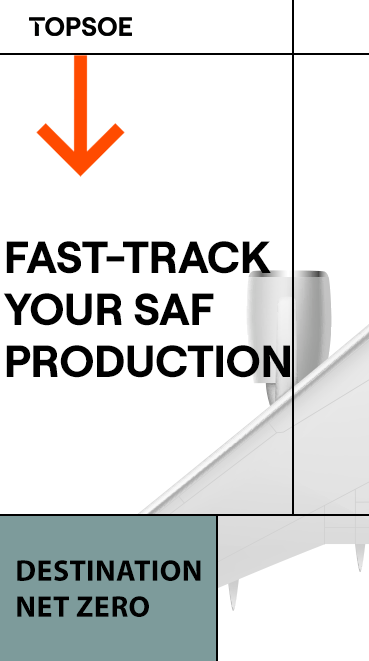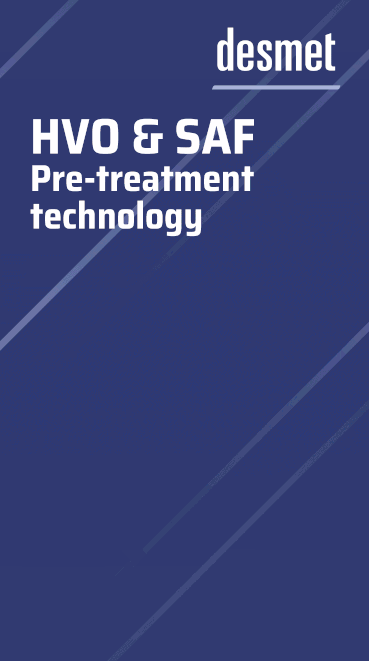Yes, You Can Use Poultry Fat as a Renewable Feedstock
- Ivy Ruggles
- Feb 2, 2024
- 4 min read

Advanced pretreatment coupled with chemistry and refining knowledge are opening new opportunities for this often-overlooked raw material.
There is an increased demand for greener fuels, which has prompted research and development into finding alternative feedstocks for renewable diesel and sustainable aviation fuel (SAF). Poultry fat, with a carbon-intensity (CI) score that is up to 80 percent lower than conventional diesel fuel, has the potential to become a star for making ecofriendly fuels. So far, very little has been converted, but with advancements in chemistry, poultry fat no longer needs to be excluded from the renewable pool.
Fully Degummed Poultry Fat
For poultry fat to be viable, it must be fully degummed to between 3 parts per million (ppm) and 5 ppm phosphorus—and ideally, even lower. Conventional pretreatment processes often struggle to effectively remove phosphorus and other metallic compounds from poultry fat. The chemistry of poultry is inherently more difficult to treat with water-based solutions, due to its propensity to form stable emulsions from the high monoglyceride and diglyceride content. Raw poultry fats can exceed 1,000 ppm in metals and more than 500 ppm in phosphorus content alone. Oleo-X routinely generates a 1 ppm phosphorous feedstock with less than 10 ppm total metals. The feed quality is substantially similar to refined, bleached and deodorized (RBD) soybean oil and super-degummed rapeseed or canola oil.

Poultry Fat That Flows
Poultry fat will initiate wax formation in its raw, untreated form at relatively warm temperatures. As untreated poultry fat cools, it forms complex structures that require heating to above the wax-formation temperature, even more than 100 degrees Fahrenheit, to regain flowability. This high temperature requirement has been a major concern for renewable diesel and SAF processors, as they must invest in heat-traced infrastructure and insulated storage tanks with circulation. However, treated poultry fat will suppress wax-crystal formation by at least 20 degrees F.
Combining soybean oil with fully degummed poultry fat yields further improved cold flow. The two are miscible and form a liquid that shows even more potential to withstand crystallization in cold environments. Although U.S. EPA has restrictions against the blending of renewable energy feedstocks, blending for direct conversion by renewable diesel and SAF refiners has been allowed when meeting specific criteria favoring the producer. Hence, purchasing a deeply treated poultry fat to blend with soybean oil can be an effective strategy for refiners to process poultry without having to invest in heat tracing, insulation and heated tanks. Furthermore, this provides for enhanced flexibility in feedstock selection and processing, as well as improved economics due to the additional Low Carbon Fuel Standard credits that can be earned from the lower-CI poultry fat.

FFA, Shelf Life
Oleo-X has processed millions of pounds of poultry fat from a range of suppliers. To date, the poultry fat that Oleo-X has processed has varied from 3 percent to 15 percent free fatty acid (FFA) content, with an average of approximately 6 percent. The time between rendering and processing is critical for minimizing acid formation. Residual free-water content, humidity and contaminants can cause ongoing hydrolysis. Therefore, supply-chain speed is essential and having close proximity to the rendering plants is critical. The impression that poultry-fat acidity is constantly closer to 15 percent most likely indicates improper handling.
In addition, storage of raw poultry fat is complicated by contaminants that catalyze hydrolysis reactions leading to rancidity. However, Oleo-X has observed that the shelf life of its deeply treated poultry fat is substantially like the shelf life of edible oils.
Yield Loss
Yields have been problematic for poultry processing through conventional alkali refining processes due to the removal of FFAs as soapstock during the neutralizing step. This has caused yields to be considerably lower than comparable soy or rapeseed/canola oil by several percent and up to 15 percent. The rejection of a large quantity of soapstock from centrifuges can often become a mechanical issue that limits throughput rate. In addition, if these oil-laden streams are allowed to flow into the wastewater-treatment system, it is likely that effluent quality will also be greatly impacted. However, by modifying chemistry, we have seen loss rates of around 3 percent with oil recoveries around 97 percent, even with high-FFA feedstocks.
Other Impurities
Poultry fat will contain higher sulfur than soy and rapeseed or canola oil. Having this sulfur present in a renewable diesel or SAF unit is generally favorable, as it helps to sustain a sulfide catalyst and can be offset against injected sulfiding agents like dimethyl disulfide (DMDS). In short, a sulfur content of 25 ppm to 75 ppm in poultry fat should not pose an issue for renewable diesel and SAF processing.
Poultry fat often contains silicon, but very little of this is of the reactive siloxane form. Siloxanes, which are used for foam suppression in petroleum-refining processes, can be responsible for hydroprocessing catalyst fouling. However, reactive siloxane species will be removed during pretreatment. The remaining silicon is nonreactive and originates from nano-sand molecules, which are added to chicken feed as drying agents and for antibiotic delivery. These nano-sand molecules are less than 100 nanometers and cannot be filtered. Oleo-X’s experience is that 5 ppm to 15 ppm of nonreactive silica will be found in treated poultry. The nonreactive nano silicon should not impact hydrotreater life, catalyst activity or fuel quality.
Poultry fat contains higher nitrogen than seed oils due to the presence of amino acids and nitrogen-containing phosphatides. Raw poultry fat can exceed 1,000 ppm of nitrogen. Oleo-X’s treated product removes all nitrogen-containing phosphatides, in addition to water-soluble amino acids and trace compounds. However, there are still hydrophobic nitrogen compounds that will remain. Treated poultry will contain 200 ppm to 500 ppm of nitrogen. In petroleum refining, it is common for heavy gasoils to contain up to 2,000 ppm of nitrogen, including refractory structures like pyridine. Poultry-fat nitrogen is less complex than petroleum and should be manageable by most technology providers.
As the world seeks greener alternatives, fully degummed poultry fat as a renewable feedstock presents a compelling and sustainable solution for the future of ecofriendly fuel production now.

Author: Ivy Ruggles
Managing Partner
Inddevco






















-RKstandin.jpg)
_gif.gif)




